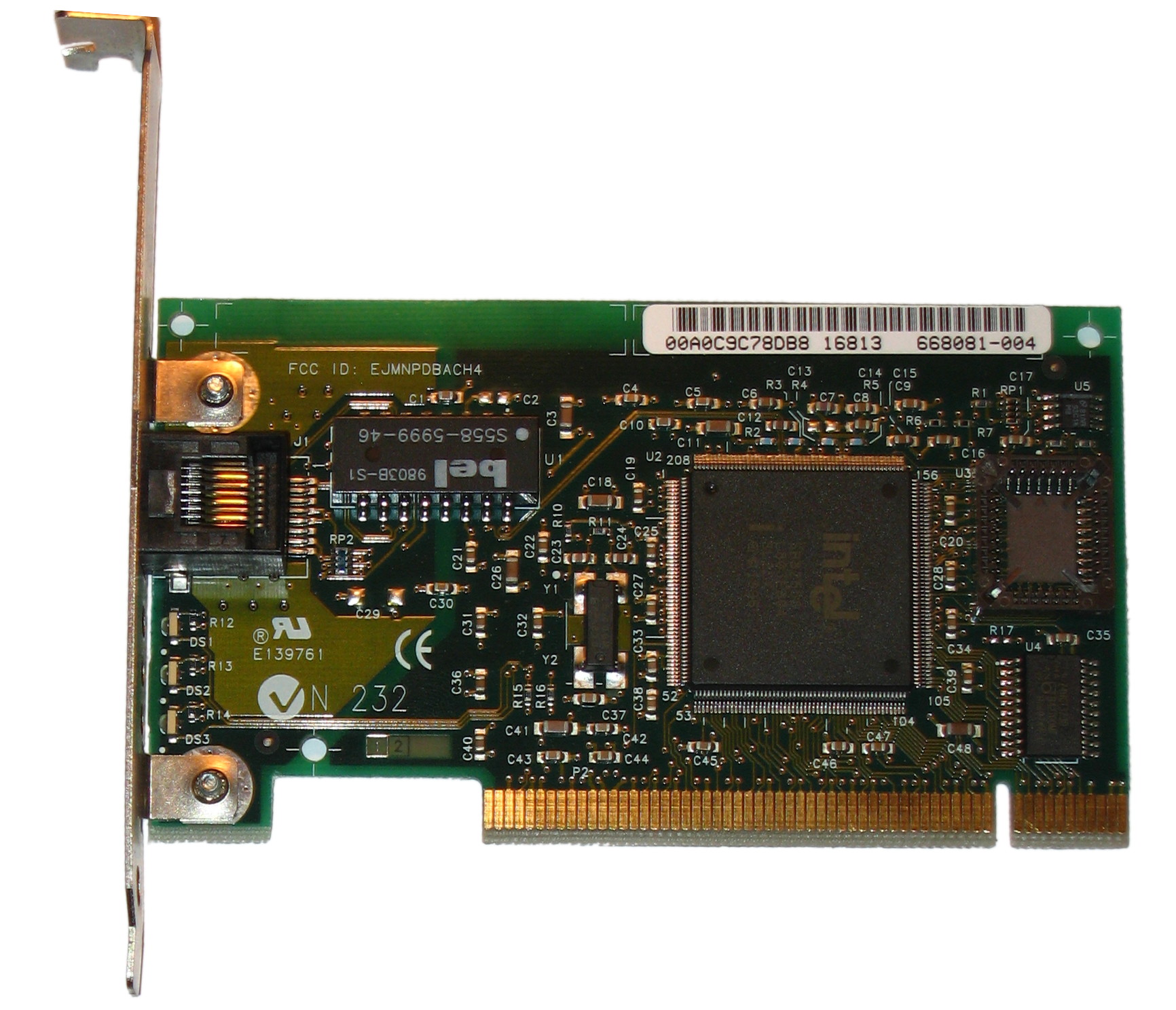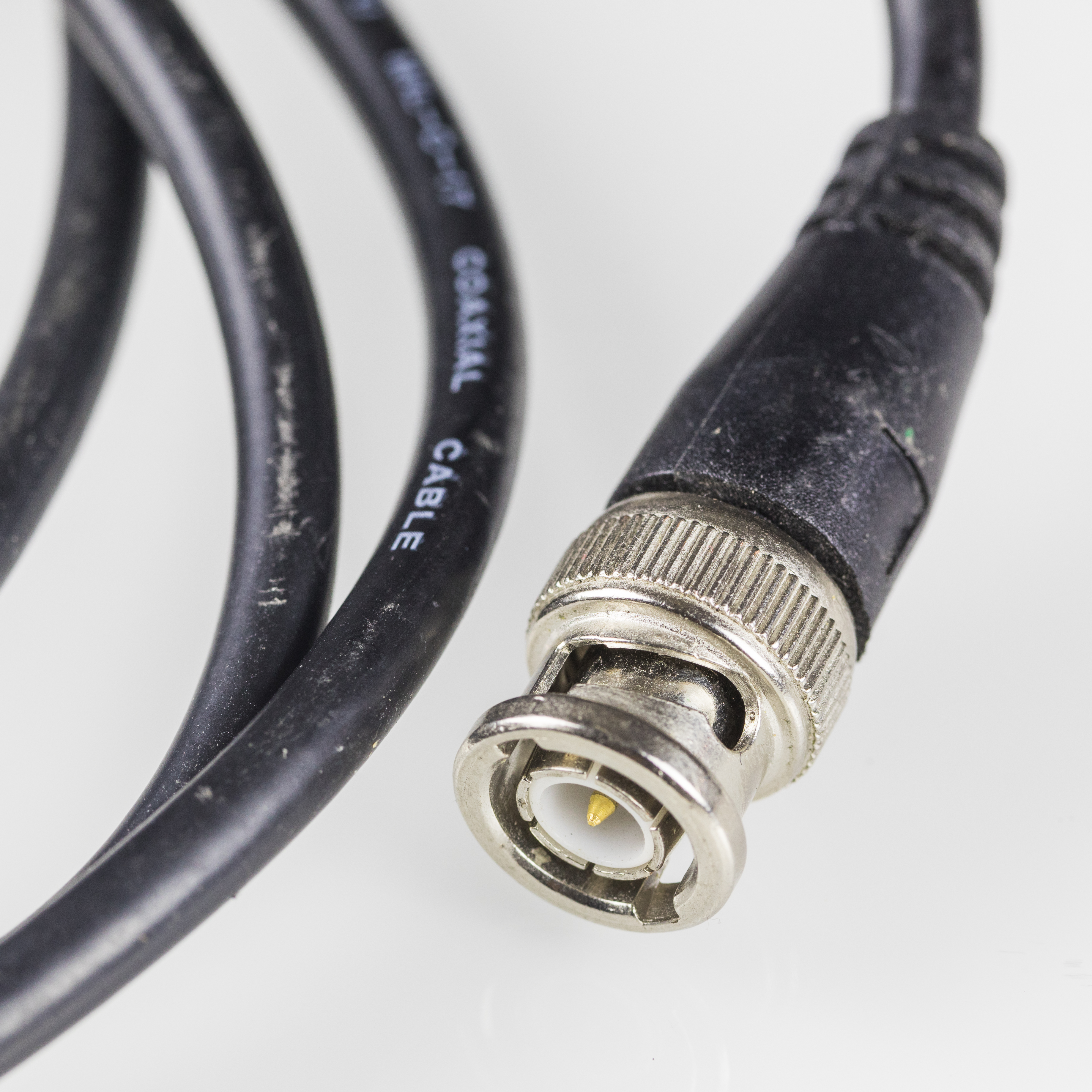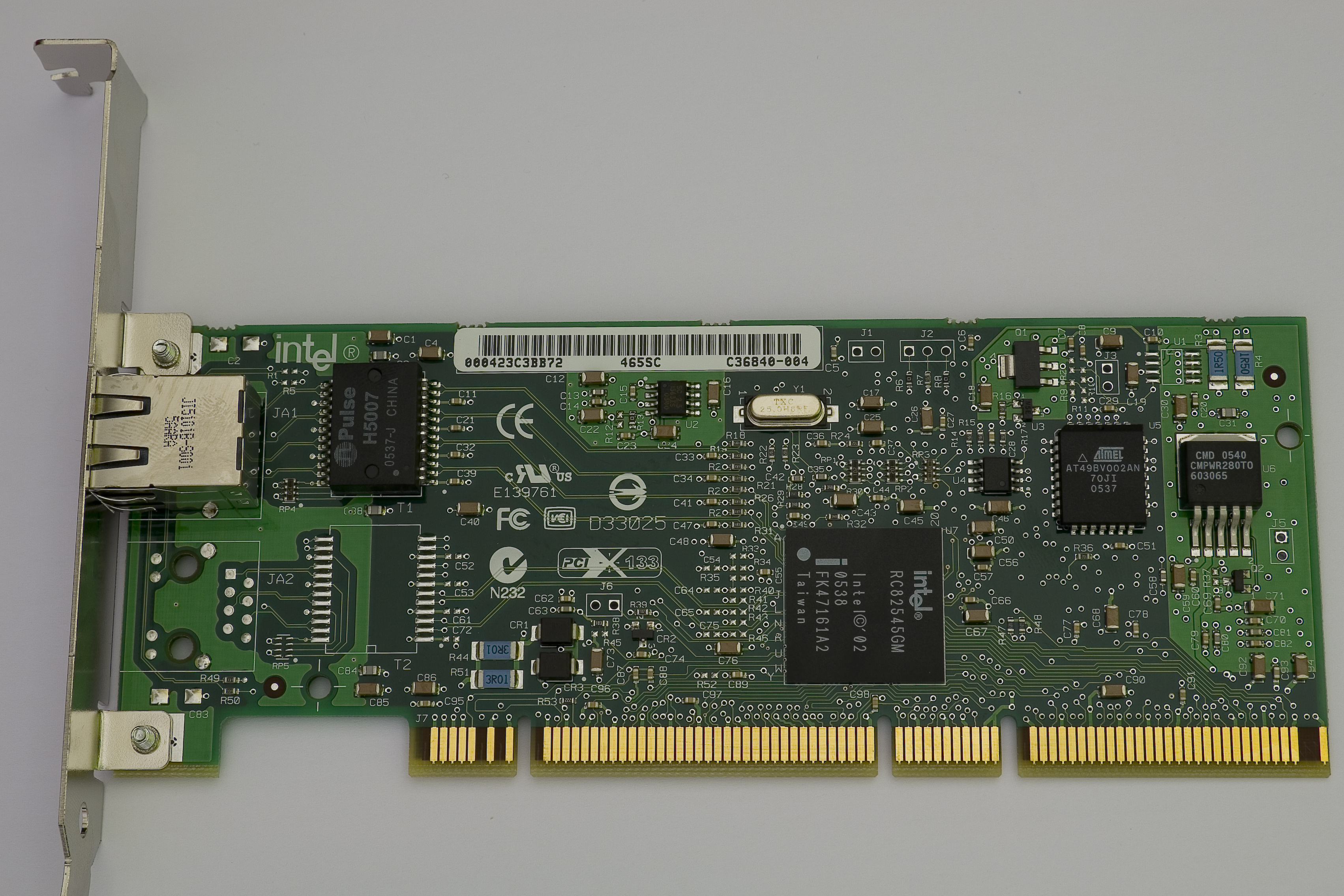|
Velocity Of Propagation
The velocity factor (VF), also called wave propagation speed or velocity of propagation (VoP or of a transmission medium is the ratio of the speed at which a wavefront (of an electromagnetic signal, a radio signal, a light pulse in an optical fibre or a change of the electrical voltage on a copper wire) passes through the medium, to the speed of light in vacuum. For optical signals, the velocity factor is the reciprocal of the refractive index. The speed of radio signals in vacuum, for example, is the speed of light, and so the velocity factor of a radio wave in vacuum is 1.0 (unity). In electrical cables, the velocity factor mainly depends on the insulating material (see table below). The use of the terms ''velocity of propagation'' and ''wave propagation speed'' to mean a ratio of speeds is confined to the computer networking and cable industries. In a general science and engineering context, these terms would be understood to mean a true speed or velocity in units of distance ... [...More Info...] [...Related Items...] OR: [Wikipedia] [Google] [Baidu] |
Transmission Medium
A transmission medium is a system or substance that can mediate the propagation of signals for the purposes of telecommunication. Signals are typically imposed on a wave of some kind suitable for the chosen medium. For example, data can modulate sound, and a transmission medium for sounds may be air, but solids and liquids may also act as the transmission medium. Vacuum or air constitutes a good transmission medium for electromagnetic waves such as light and radio waves. While material substance is not required for electromagnetic waves to propagate, such waves are usually affected by the transmission media they pass through, for instance, by absorption or reflection or refraction at the interfaces between media. Technical devices can therefore be employed to transmit or guide waves. Thus, an optical fiber or a copper cable is used as transmission media. Electromagnetic radiation can be transmitted through an optical medium, such as optical fiber, or through twisted pair wires ... [...More Info...] [...Related Items...] OR: [Wikipedia] [Google] [Baidu] |
Fiber-optic Communication
Fiber-optic communication is a method of transmitting information from one place to another by sending pulses of infrared light through an optical fiber. The light is a form of carrier wave that is modulated to carry information. Fiber is preferred over electrical cabling when high bandwidth, long distance, or immunity to electromagnetic interference is required. This type of communication can transmit voice, video, and telemetry through local area networks or across long distances. Optical fiber is used by many telecommunications companies to transmit telephone signals, internet communication, and cable television signals. Researchers at Bell Labs have reached a record bandwidth–distance product of over kilometers per second using fiber-optic communication. Background First developed in the 1970s, fiber-optics have revolutionized the telecommunications industry and have played a major role in the advent of the Information Age. Because of its advantages over electrical ... [...More Info...] [...Related Items...] OR: [Wikipedia] [Google] [Baidu] |
Category 3 Cable
Category 3 cable, commonly known as or station wire, and less commonly known as VG or voice-grade (as, for example, in 100BaseVG), is an unshielded twisted pair (UTP) cable used in telephone wiring. It is part of a family of standards defined jointly by the Electronic Industries Alliance (EIA) and the Telecommunications Industry Association (TIA) and published in TIA/EIA-568-B. Although designed to reliably carry data up to 10 Mbit/s, modern data networks run at much higher speeds, and or better cable is generally used for new installations. Networking was widely used in computer networking in the early 1990s for 10BASE-T Ethernet and, to a much lesser extent, for 100BaseVG Ethernet, Token Ring and 100BASE-T4. The original Power over Ethernet 802.3af specification supports the use of cable, but the later 802.3at Type 2 high-power variation does not.IEEE 802.3at-2009, clause 33.1.1c In some use cases and for short distances, Cat 3 may be capable of carrying 100BASE- ... [...More Info...] [...Related Items...] OR: [Wikipedia] [Google] [Baidu] |
1000BASE-T
In computer networking, Gigabit Ethernet (GbE or 1 GigE) is the term applied to transmitting Ethernet frames at a rate of a gigabit per second. The most popular variant, 1000BASE-T, is defined by the IEEE 802.3ab standard. It came into use in 1999, and has replaced Fast Ethernet in wired local networks due to its considerable speed improvement over Fast Ethernet, as well as its use of cables and equipment that are widely available, economical, and similar to previous standards. History Ethernet was the result of research conducted at Xerox PARC in the early 1970s, and later evolved into a widely implemented physical and link layer protocol. Fast Ethernet increased the speed from 10 to 100 megabits per second (Mbit/s). Gigabit Ethernet was the next iteration, increasing the speed to 1000 Mbit/s. * The initial standard for Gigabit Ethernet was produced by the IEEE in June 1998 as IEEE 802.3z, and required optical fiber. 802.3z is commonly referred to as 1000BASE-X, whe ... [...More Info...] [...Related Items...] OR: [Wikipedia] [Google] [Baidu] |
100BASE-TX
In computer networking, Fast Ethernet physical layers carry traffic at the nominal rate of 100 Mbit/s. The prior Ethernet speed was 10 Mbit/s. Of the Fast Ethernet physical layers, 100BASE-TX is by far the most common. Fast Ethernet was introduced in 1995 as the IEEE 802.3u standard and remained the fastest version of Ethernet for three years before the introduction of Gigabit Ethernet. The acronym ''GE/FE'' is sometimes used for devices supporting both standards. Nomenclature The "100" in the media type designation refers to the transmission speed of 100 Mbit/s, while the "BASE" refers to baseband signaling. The letter following the dash ("T" or "F") refers to the physical medium that carries the signal (twisted pair or fiber, respectively), while the last character ("X", "4", etc.) refers to the line code method used. Fast Ethernet is sometimes referred to as 100BASE-X, where "X" is a placeholder for the FX and TX variants. General design Fast Ethernet ... [...More Info...] [...Related Items...] OR: [Wikipedia] [Google] [Baidu] |
Category 5 Cable
Category 5 cable (Cat 5) is a twisted pair cable for computer networks. Since 2001, the variant commonly in use is the Category 5e specification (Cat 5e). The cable standard provides performance of up to 100 MHz and is suitable for most varieties of Ethernet over twisted pair up to 2.5GBASE-T but more commonly runs at (Gigabit Ethernet) speeds. Cat 5 is also used to carry other signals such as telephone and video. This cable is commonly connected using punch-down blocks and modular connectors. Most Category 5 cables are unshielded, relying on the balanced line twisted pair design and differential signaling for noise rejection. Standards The specification for category 5 cable is defined in ISO/IEC 11801, IEC 61156 and EN 50173. The specification for category 5 cable was defined in ANSI/ TIA/EIA-568-A, with clarification in TSB-95. These documents specify performance characteristics and test requirements for frequencies up t ... [...More Info...] [...Related Items...] OR: [Wikipedia] [Google] [Baidu] |
10GBASE-T
10 Gigabit Ethernet (10GE, 10GbE, or 10 GigE) is a group of computer networking technologies for transmitting Ethernet frames at a rate of 10 gigabits per second. It was first defined by the IEEE 802.3ae-2002 standard. Unlike previous Ethernet standards, 10 Gigabit Ethernet defines only full-duplex point-to-point links which are generally connected by network switches; shared-medium CSMA/CD operation has not been carried over from the previous generations Ethernet standards so half-duplex operation and repeater hubs do not exist in 10GbE. The 10 Gigabit Ethernet standard encompasses a number of different physical layer (PHY) standards. A networking device, such as a switch or a network interface controller may have different PHY types through pluggable PHY modules, such as those based on SFP+. Like previous versions of Ethernet, 10GbE can use either copper or fiber cabling. Maximum distance over copper cable is 100 meters but because of its bandwidth requirements, higher ... [...More Info...] [...Related Items...] OR: [Wikipedia] [Google] [Baidu] |
Category 6A Cable
Category 6 cable (Cat 6) is a standardized twisted pair cable for Ethernet and other network physical layers that is backward compatible with the Category 5/5e and Category 3 cable standards. Cat 6 must meet more stringent specifications for crosstalk and system noise than Cat 5 and Cat 5e. The cable standard specifies performance of up to 250 MHz, compared to 100 MHz for Cat 5 and Cat 5e. Whereas Category 6 cable has a reduced maximum length of when used for 10GBASE-T, Category 6A cable is characterized to 500 MHz and has improved alien crosstalk characteristics, allowing 10GBASE-T to be run for the same maximum distance as previous Ethernet variants. History Cat 6, an unshielded twisted-pair (UTP) design, emerged as an advancement of the UTP Cat 5e, and was formalised in 2001. The design of Cat 6 required more stringent precision in manufacturing, and this enabled reduced noise and crossta ... [...More Info...] [...Related Items...] OR: [Wikipedia] [Google] [Baidu] |
10BASE2
10BASE2 (also known as cheapernet, thin Ethernet, thinnet, and thinwire) is a variant of Ethernet that uses thin coaxial cable terminated with BNC connectors to build a local area network. During the mid to late 1980s this was the dominant 10 Mbit/s Ethernet standard, but due to the immense demand for high-speed networking, the low cost of Category 5 cable, and the popularity of 802.11 wireless networks, both 10BASE2 and 10BASE5 have become increasingly obsolete, though devices still exist in some locations. As of 2011, IEEE 802.3 has deprecated this standard for new installations. Name origination The name ''10BASE2'' is derived from several characteristics of the physical medium. The ''10'' comes from the transmission speed of 10 Mbit/s. The ''BASE'' stands for baseband signaling, and the ''2'' for a maximum segment length approaching 200 m (the actual maximum length is 185 m). Signal encoding 10 Mbit/s Ethernet uses Manchester coding. A binary ze ... [...More Info...] [...Related Items...] OR: [Wikipedia] [Google] [Baidu] |
Polystyrene
Polystyrene (PS) is a synthetic polymer made from monomers of the aromatic hydrocarbon styrene. Polystyrene can be solid or foamed. General-purpose polystyrene is clear, hard, and brittle. It is an inexpensive resin per unit weight. It is a poor barrier to oxygen and water vapour and has a relatively low melting point. Polystyrene is one of the most widely used plastics, the scale of its production being several million tonnes per year. Polystyrene can be naturally transparent, but can be colored with colorants. Uses include protective packaging (such as packing peanuts and in the jewel cases used for storage of optical discs such as CDs and occasionally DVDs), containers, lids, bottles, trays, tumblers, disposable cutlery, in the making of models, and as an alternative material for phonograph records. As a thermoplastic polymer, polystyrene is in a solid (glassy) state at room temperature but flows if heated above about 100 °C, its glass transition temperature. I ... [...More Info...] [...Related Items...] OR: [Wikipedia] [Google] [Baidu] |
Gigabit Ethernet
In computer networking, Gigabit Ethernet (GbE or 1 GigE) is the term applied to transmitting Ethernet frames at a rate of a gigabit per second. The most popular variant, 1000BASE-T, is defined by the IEEE 802.3ab standard. It came into use in 1999, and has replaced Fast Ethernet in wired local networks due to its considerable speed improvement over Fast Ethernet, as well as its use of cables and equipment that are widely available, economical, and similar to previous standards. History Ethernet was the result of research conducted at Xerox PARC in the early 1970s, and later evolved into a widely implemented physical and link layer protocol. Fast Ethernet increased the speed from 10 to 100 megabits per second (Mbit/s). Gigabit Ethernet was the next iteration, increasing the speed to 1000 Mbit/s. * The initial standard for Gigabit Ethernet was produced by the IEEE in June 1998 as IEEE 802.3z, and required optical fiber. 802.3z is commonly referred to as 1000BASE-X, whe ... [...More Info...] [...Related Items...] OR: [Wikipedia] [Google] [Baidu] |
Poly(methyl Methacrylate)
Poly(methyl methacrylate) (PMMA) belongs to a group of materials called engineering plastics. It is a transparent thermoplastic. PMMA is also known as acrylic, acrylic glass, as well as by the trade names and brands Crylux, Plexiglas, Acrylite, Astariglas, Lucite, Perclax, and Perspex, among several others ( see below). This plastic is often used in sheet form as a lightweight or shatter-resistant alternative to glass. It can also be used as a casting resin, in inks and coatings, and for many other purposes. Although not a type of familiar silica-based glass, the substance, like many thermoplastics, is often technically classified as a type of glass, in that it is a non-crystalline vitreous substance—hence its occasional historic designation as ''acrylic glass''. Chemically, it is the synthetic polymer of methyl methacrylate. It was developed in 1928 in several different laboratories by many chemists, such as William Chalmers, Otto Röhm, and Walter Bauer, and first brought ... [...More Info...] [...Related Items...] OR: [Wikipedia] [Google] [Baidu] |









